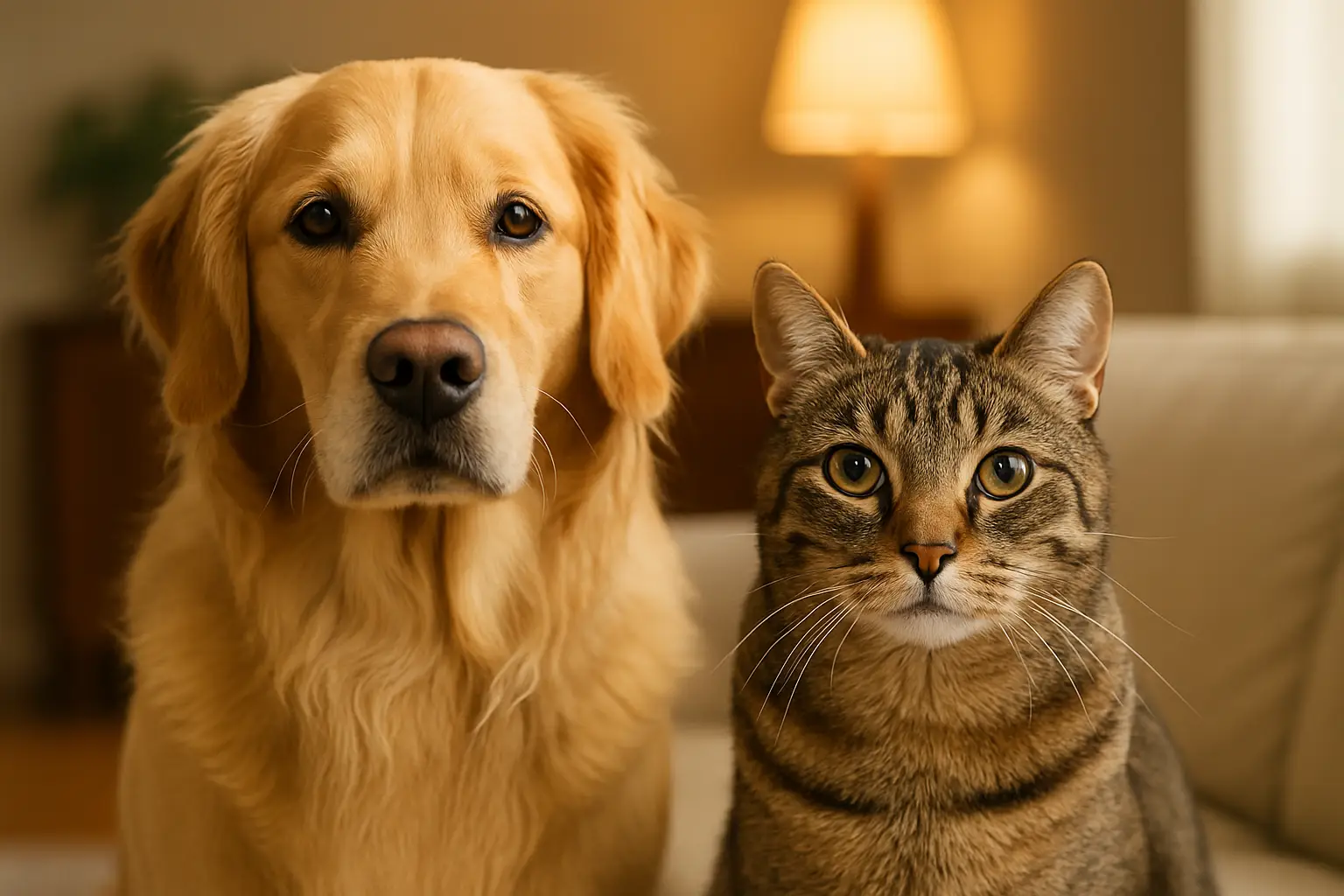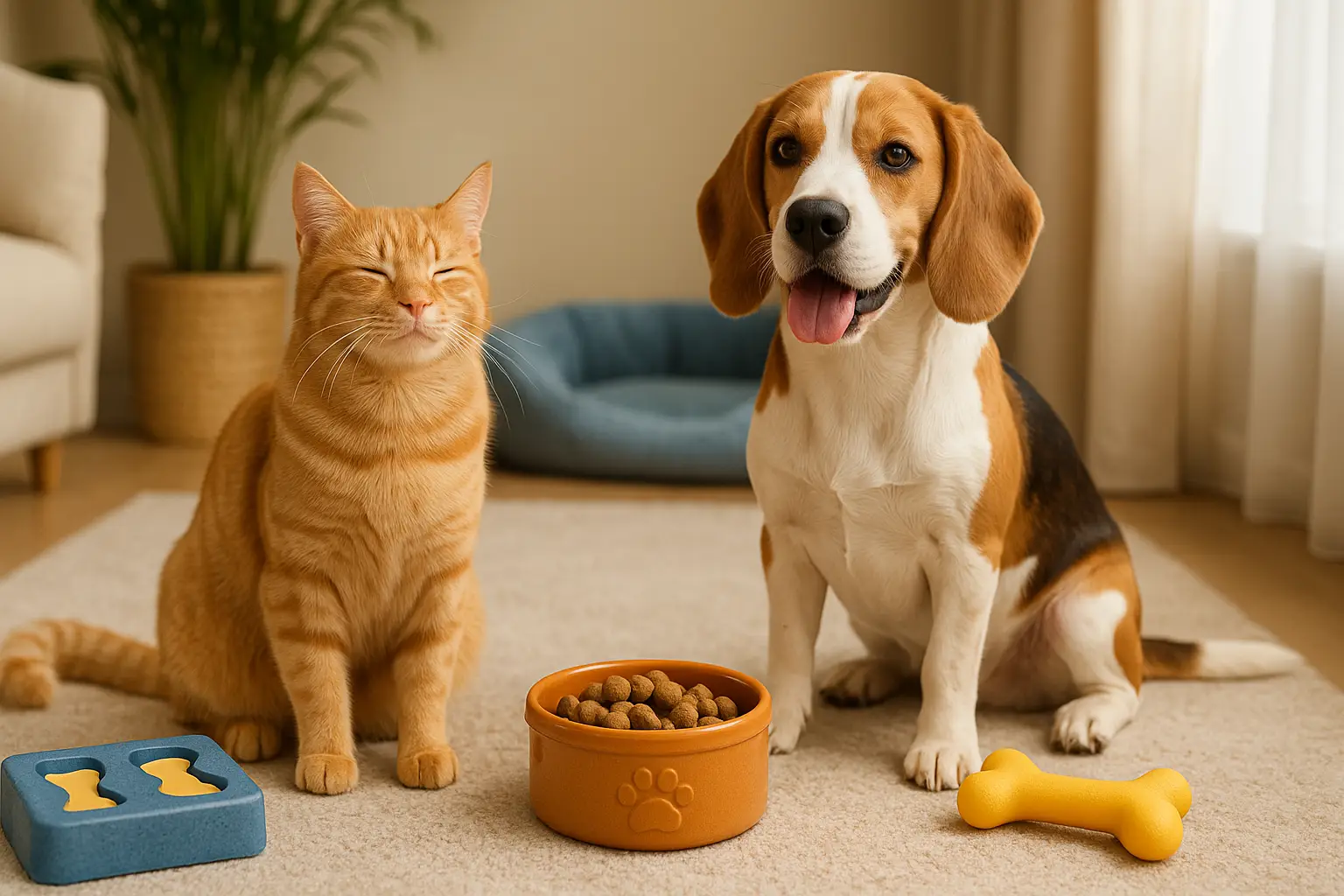How to Organize a Daily Pet Schedule That Works for the Whole Family
Life is busy. Between school drop-offs, work meetings, meals, errands, and bedtime routines, families juggle a lot. Adding a dog or cat into the mix brings joy—but also responsibilities that require structure. The good news? A well-organized daily pet schedule can help everyone thrive, including your furry friend.
When you coordinate pet care with your family’s schedule, it doesn’t feel like a chore—it becomes part of the rhythm of your home. Pets benefit from predictable routines, and humans benefit from clarity, fairness, and teamwork.
This guide will show you how to create a sustainable, flexible, and harmonious daily schedule for your pet that works with your family’s unique lifestyle.

Why a Pet Schedule Is Essential for Family Life
A daily routine isn’t just about control—it’s about confidence, trust, and calm for both pets and people.
Benefits of a Pet Schedule:
- Reduces behavioral issues (barking, accidents, restlessness)
- Makes transitions (work, school, bedtime) smoother
- Encourages shared responsibility among family members
- Supports your pet’s physical and emotional well-being
- Builds deeper bonds through daily connection
Without a routine, pets become anxious—and families become reactive instead of proactive.
Step 1: Know Your Pet’s Natural Rhythm
Dogs and cats thrive on structure but have different needs.
Dogs:
- Prefer structured walks, playtime, and consistent feeding
- Do best with regular bathroom breaks
- Thrive with social time and training woven into the day
Cats:
- Are crepuscular (most active at dawn and dusk)
- Prefer short, consistent bursts of interaction
- Value routine feeding and clean litter boxes
Understanding their internal clocks will help you build a better schedule.
Step 2: Map Out Your Family’s Core Routine
Before adding pet tasks, outline your existing daily schedule.
Identify Key Time Blocks:
- Wake-up
- School/work prep
- Commute times
- Meal prep and eating
- Homework or activities
- Wind-down and bedtime
This helps you plug in pet care at logical, sustainable times.
Step 3: Assign Pet Care Responsibilities
Shared ownership builds consistency and avoids burnout.
Create a Pet Task Chart:
| Task | Morning | Afternoon | Evening | Person Responsible |
|---|---|---|---|---|
| Feed Pet | ✅ | — | ✅ | Mom / Dad |
| Walk Dog | ✅ | ✅ | ✅ | Child / Parent |
| Clean Litter Box | — | ✅ | ✅ | Teen |
| Play Time | ✅ | ✅ | ✅ | Rotate |
| Training | — | ✅ | ✅ | Parent |
| Refill Water | ✅ | — | ✅ | Anyone |
| Groom / Brush | — | ✅ | — | Weekly Schedule |
Tip: Use a whiteboard, app, or printed chart on the fridge to make it visible and trackable.
Step 4: Build a Sample Daily Pet Schedule
Here’s a practical example for a family with school-aged children and a dog or cat:
Morning (6:30–8:00 AM)
- Wake-up greetings and outdoor bathroom break (dog)
- Fresh water, breakfast for pets
- 5–10 minutes of light play
- Quick brush (optional)
- Litter box scoop (cat)
- Walk before school/work
Midday (12:00–2:00 PM)
- Short bathroom break (dog) or play session (cat)
- Water check
- Light treat or enrichment puzzle
- Nap time in designated safe space
Afternoon (3:00–5:00 PM)
- Post-school playtime or short training session
- Potty break (dog)
- Freshen water, scoop litter box again
- Rotate toys or offer puzzle feeders
Evening (6:00–9:00 PM)
- Dinner for pets
- Calm family hangout with pets (TV, reading, snuggling)
- Evening walk or window-watching (cat)
- Grooming or cuddle time
- Final bathroom break
- Sleep in safe, comfy space
Every family’s rhythm is different—adjust as needed for your lifestyle and pet’s temperament.
Step 5: Stick to Feeding and Potty Times
Feeding on a consistent schedule supports digestion and predictability.
Tips:
- Feed at the same two times daily (morning and evening)
- Use the same location and type of bowl
- For multiple pets, separate feeding zones to prevent tension
- Take dogs outside after meals (20–30 min later)
- Scoop the litter box at least twice daily for hygiene and odor
Don’t leave food out all day—structured meals are better for health and behavior.
Step 6: Schedule Play and Enrichment
Boredom causes behavioral problems. A structured enrichment routine prevents this.
Dogs:
- Morning: Fetch, sniff walk, puzzle toy
- Afternoon: Basic training or tug-of-war
- Evening: Chewing session or hide-and-seek indoors
Cats:
- Morning: Wand toy chase or window time
- Afternoon: Catnip or cardboard play
- Evening: Laser pointer, treat toss, or tunnel games
Aim for 10–15 minutes per session to keep them stimulated without overstimulating.
Step 7: Add Flexibility Without Losing Structure
Your routine should be consistent—but not rigid.
Flexibility Tips:
- Have backup pet sitters for emergencies
- Create “low effort” pet care days with longer rest blocks
- Allow pets to adjust to weekend shifts gradually
- Keep mealtimes and sleep locations consistent even if other things change
The goal is stability, not perfection.
Step 8: Support Transitions with Rituals
Pets sense when the day shifts—help them feel secure with predictable signals.
Examples:
- Say a specific word or phrase before leaving home
- Use the same spot for bedtime and crate time
- Keep a greeting ritual calm and consistent
- Transition between activities with soft music or light cues
Small rituals reduce confusion and improve emotional regulation.
Step 9: Reinforce Positive Habits with Praise
Routines aren’t just for control—they’re for connection.
Try:
- Praising your pet during quiet crate or nap time
- Offering a treat when they sit calmly before walks
- Saying “thank you” when they wait during feeding
- Adding a family member’s name to commands for clarity (e.g., “It’s Anna’s turn!”)
Use your schedule to reinforce desired behaviors consistently.
Step 10: Review and Adjust Monthly
As life changes, your schedule should evolve too.
Review Questions:
- Are any time blocks consistently missed?
- Is anyone overwhelmed with tasks?
- Is your pet showing signs of stress or boredom?
- Could more tasks be automated (e.g., timed feeders)?
- Are kids ready to take on new pet responsibilities?
Adjust seasonally or as your pet ages.
Final Thoughts: When the Family Flows, Pets Thrive
A pet schedule isn’t just about getting things done—it’s about creating a rhythm of care, connection, and calm.
When your whole household shares the responsibility, your pet feels seen, safe, and included. And in turn, your family builds daily moments of joy, teamwork, and growth.
Because life with pets isn’t a burden. It’s a shared story. And every well-scheduled chapter brings you closer together.




Post Comment